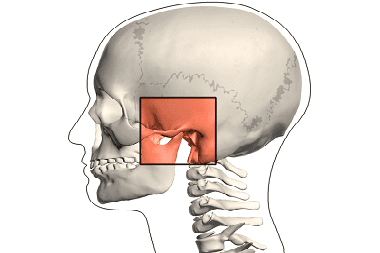Dentistry >>>> Ankylosis of the lower jaw joint
Ankylosis of the lower jaw joint.

Immobility or limited mobility in the temporomandibular joint caused by pathological adhesions of fibrous and / or bone tissue in medicine is called "ankylosis of the temporomandibular joint" (ankylosis of the lower jaw joint). The vast majority of cases of ankylosis of the jaw were recorded in childhood or adolescence, especially in males. Distinguish between congenital (associated with abnormal development of the lower jaw) and acquired ankylosis of the lower jaw (fibrous or bone fusion develops for a number of reasons).
The reasons for the development of ankylosis of the jaw are associated with injuries (blows, dislocations, fractures in the joint of the lower jaw), with complications of ENT diseases (inflammations of a purulent nature). Ankylosis of the jaw can be both unilateral and bilateral.
The fibrous or bone tissue formed as a result of ankyloses, which changes the structure of the articular elements, leads to a limitation of the mobility of the articular joints, their fusion and, as a result, to the loss of mobility of the lower jaw, its deformation, asymmetry, violation of teething, transformation of the dentition of the lower jaw, the development of a pathological occlusion. The result of transformations in the structure of the lower jaw may be violations of oral breathing, the development of apnea, the appearance of snoring.
Signs of ankylosis of the lower jaw joint:
- Difficulty moving the lower jaw,
- The inability to open the mouth to the desired width,
- Difficulty eating food due to the inability to chew it,
- Asymmetrical development of the lower jaw.
Treatment of ankylosis of the lower jaw joint at the initial stages of its formation involves physiotherapeutic procedures (electrophoresis, phonophoresis), intra-articular injections, dissection of fibrous adhesions, mechanotherapy. At the stages of persistent development of the disease, surgical treatment is used: osteotomy, arthroplasty, orthodontic treatment (correction of deformation of the dentition of the lower jaw). After the final formation of the facial skeleton, if necessary, maxillofacial plastic is performed, which allows you to restore the aesthetic appearance of the face.

Read

Read



























